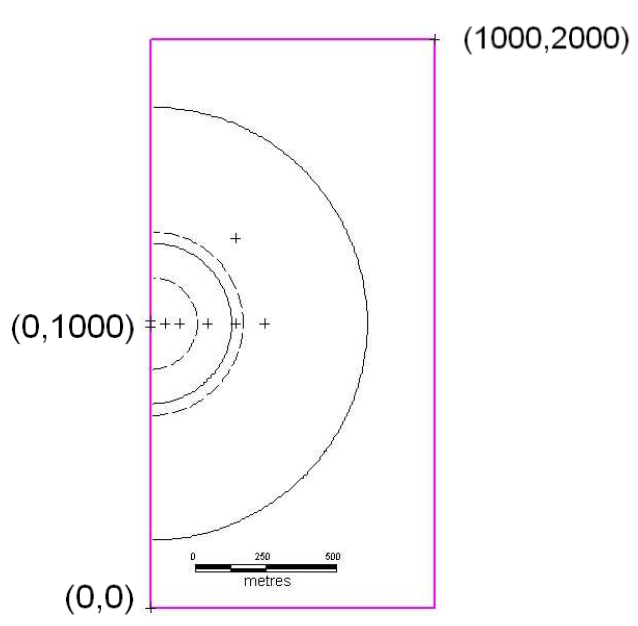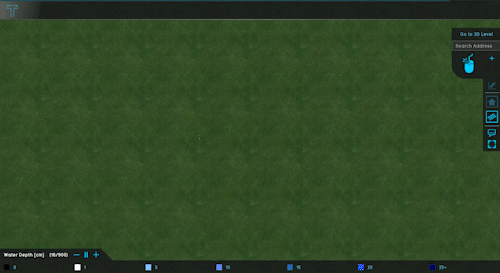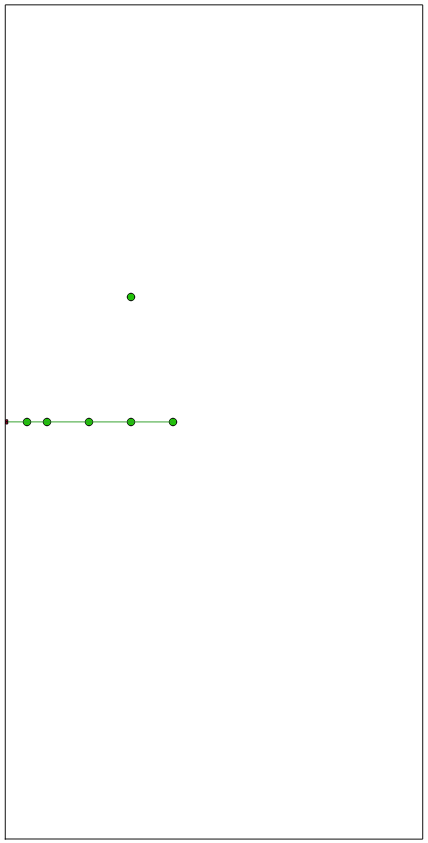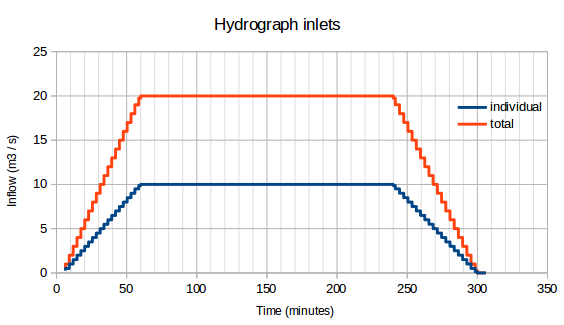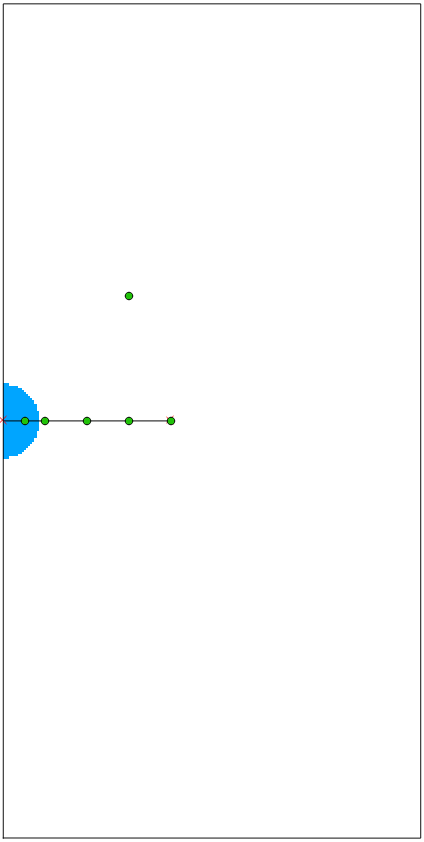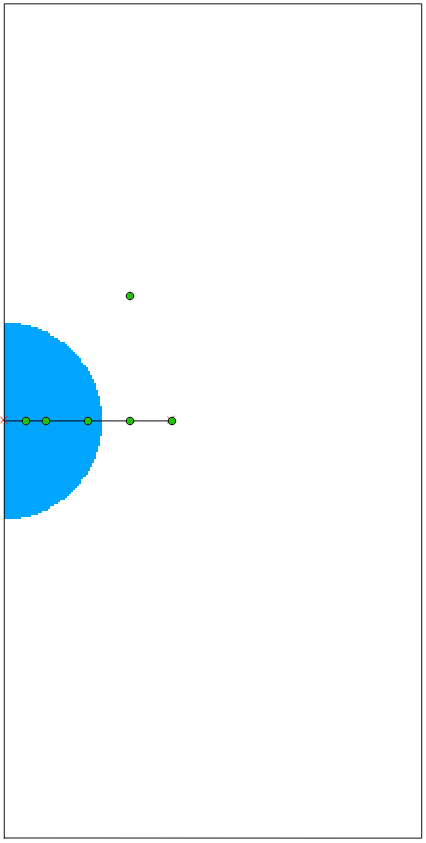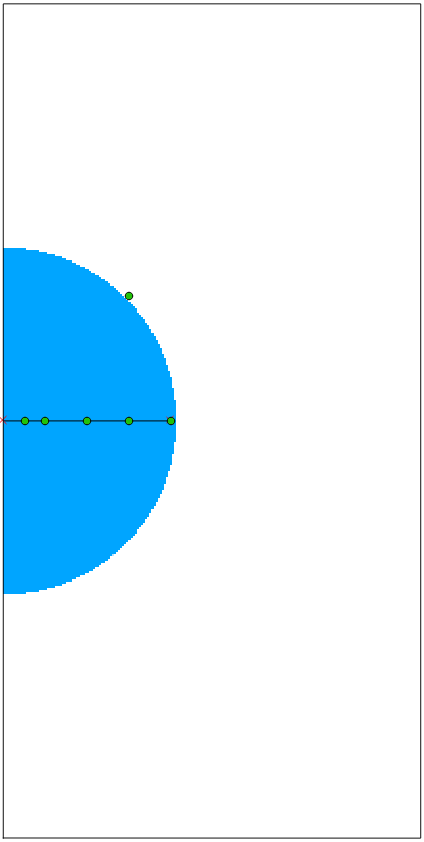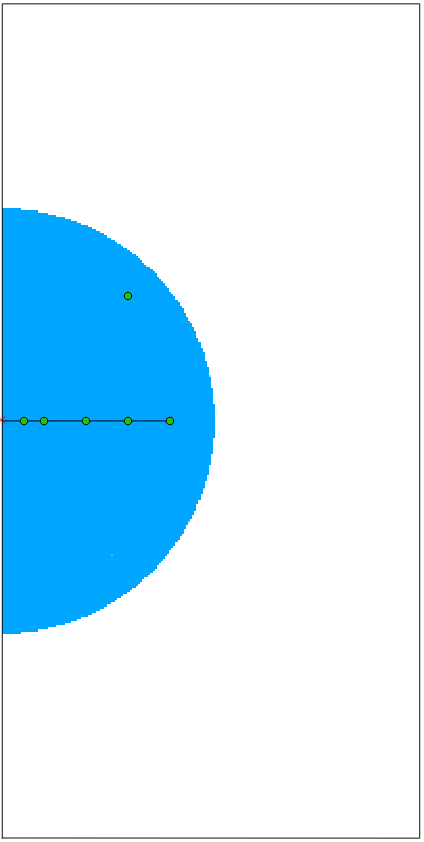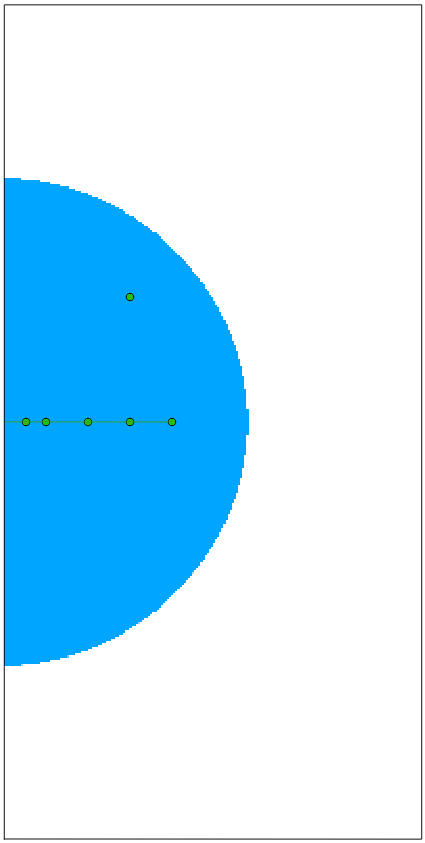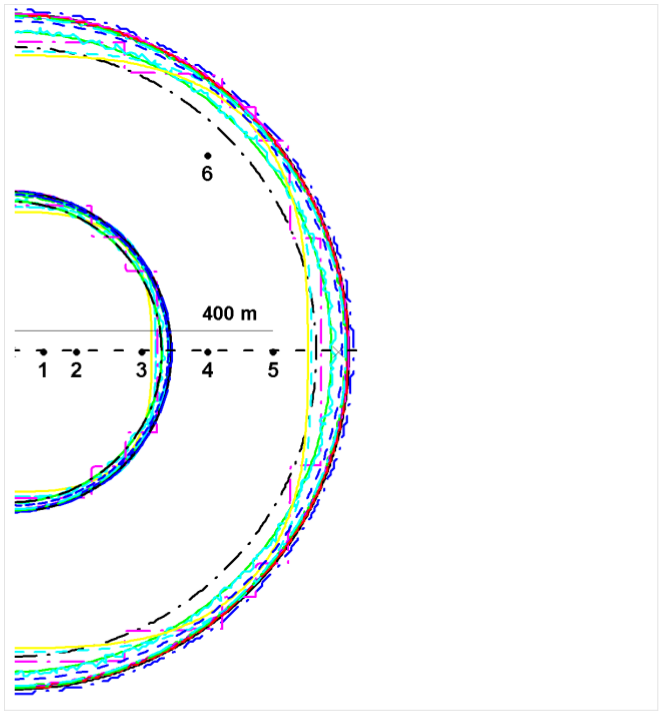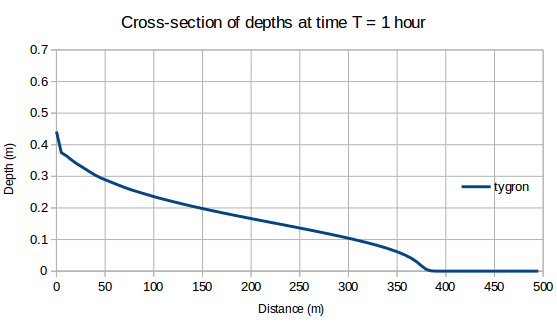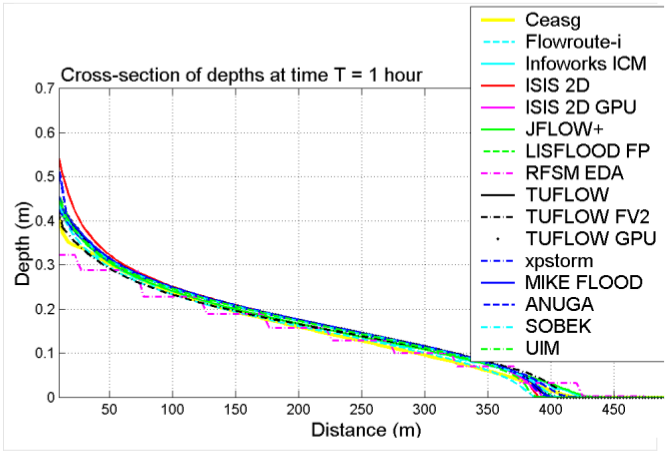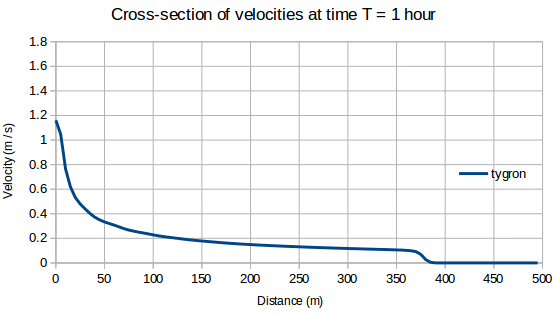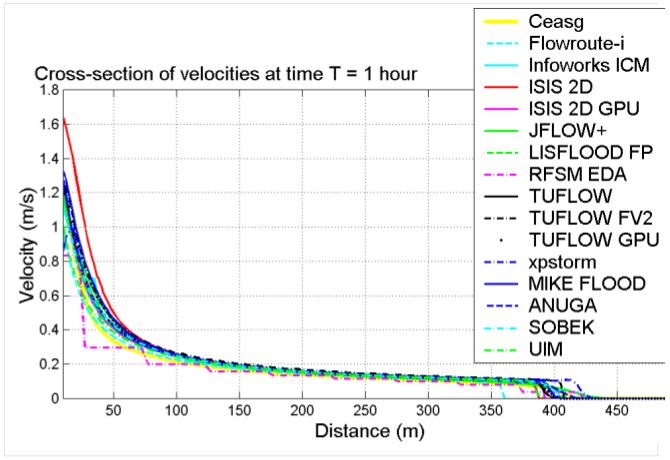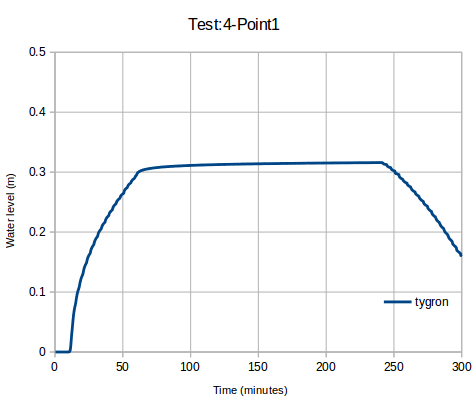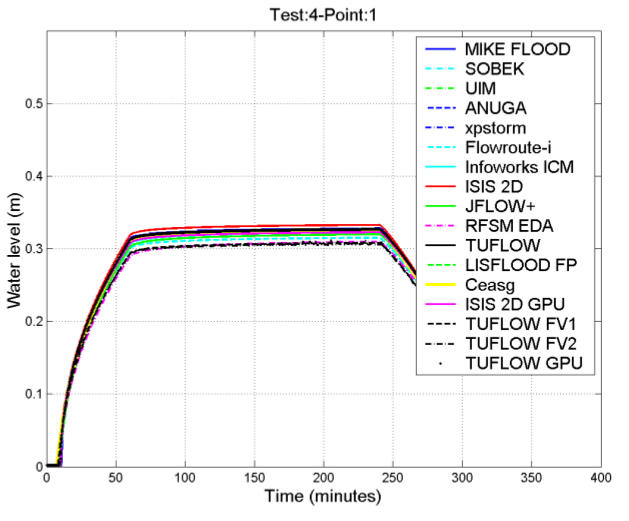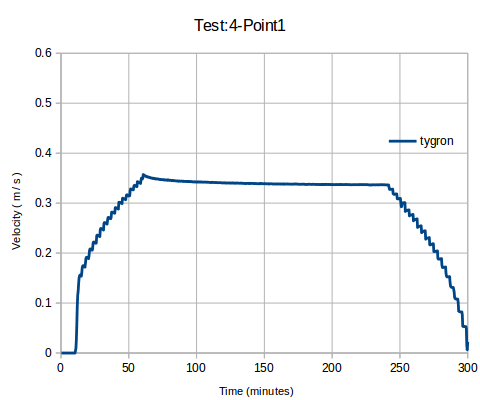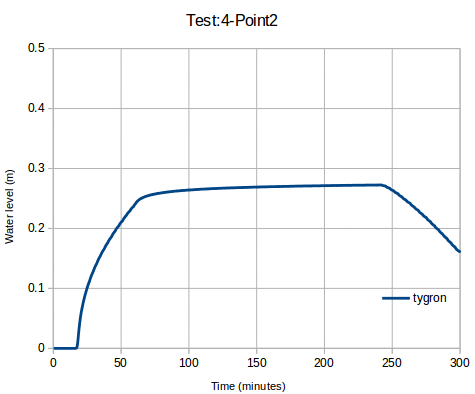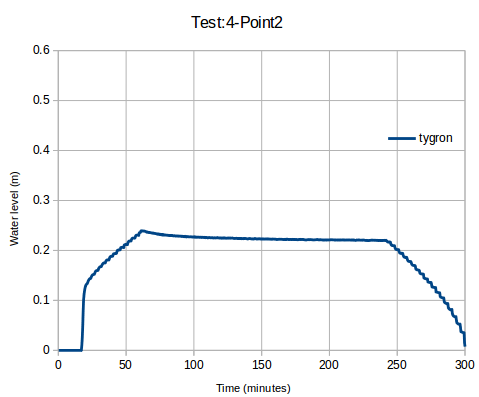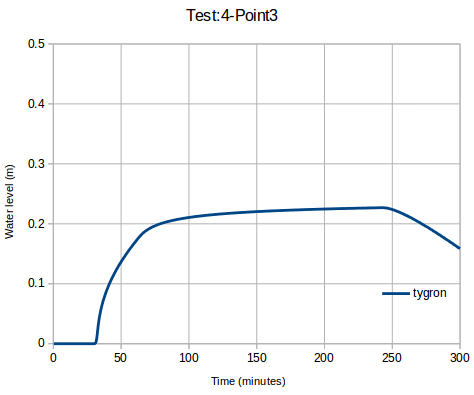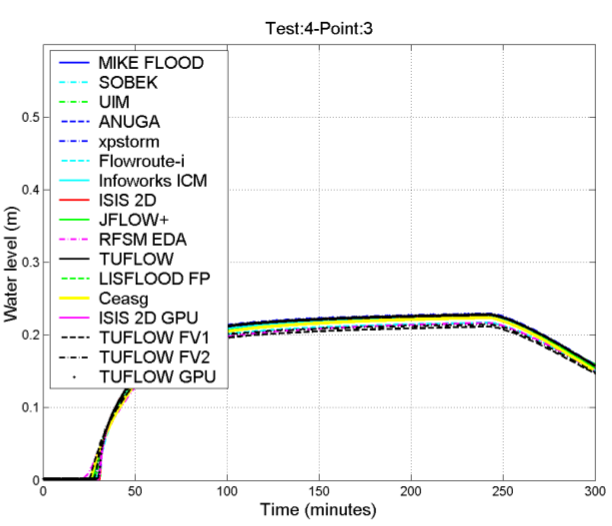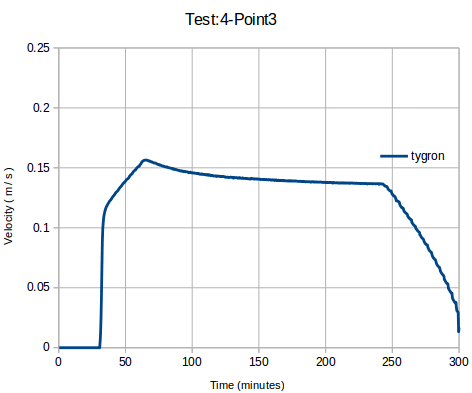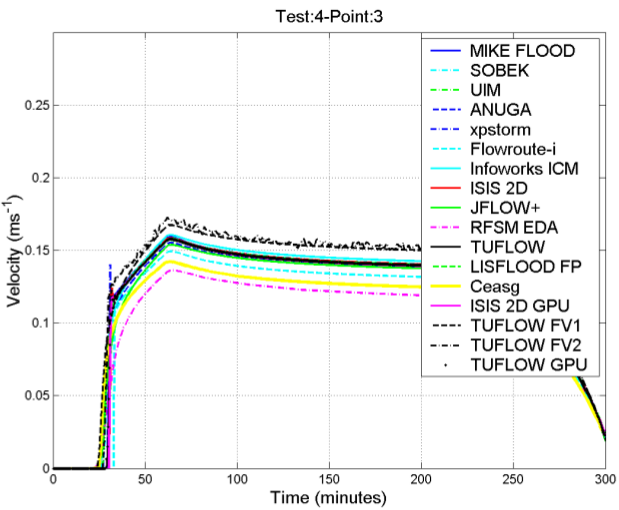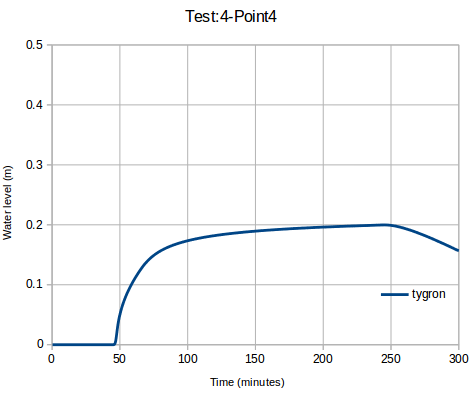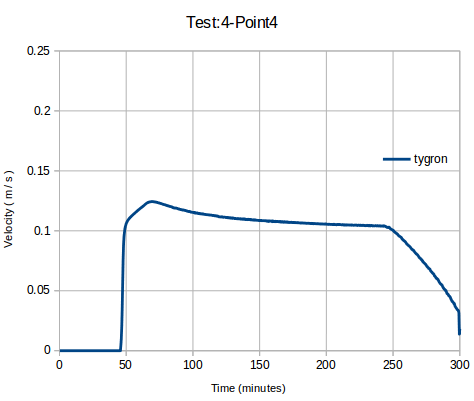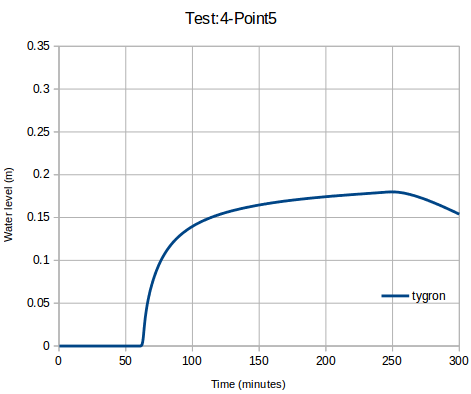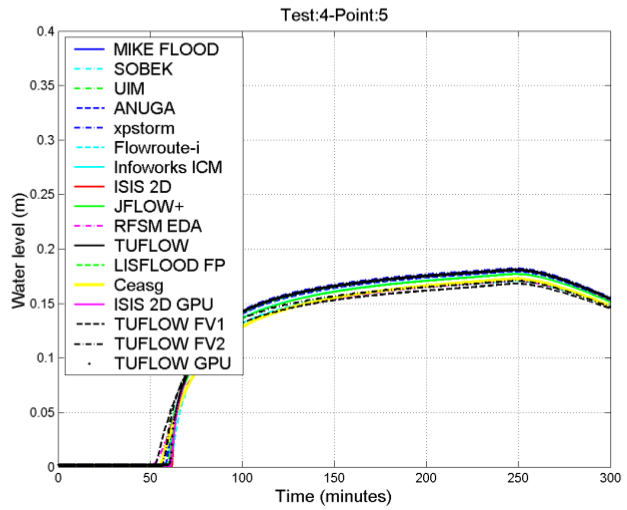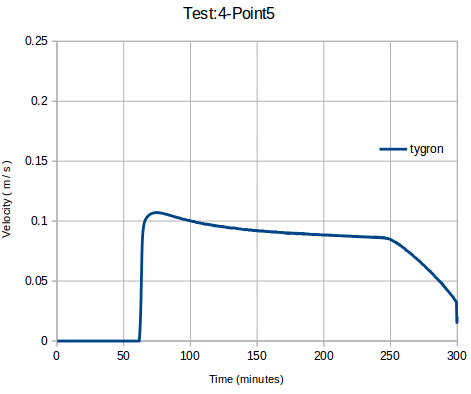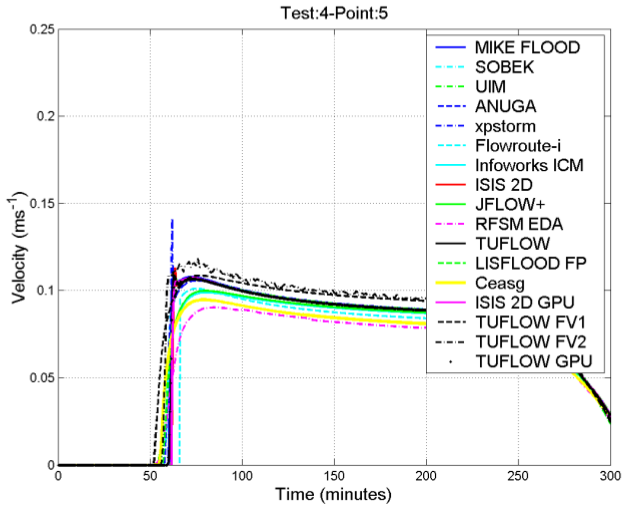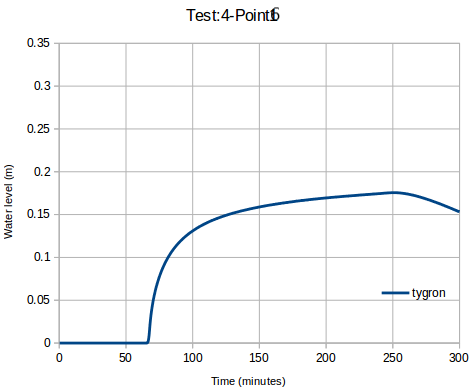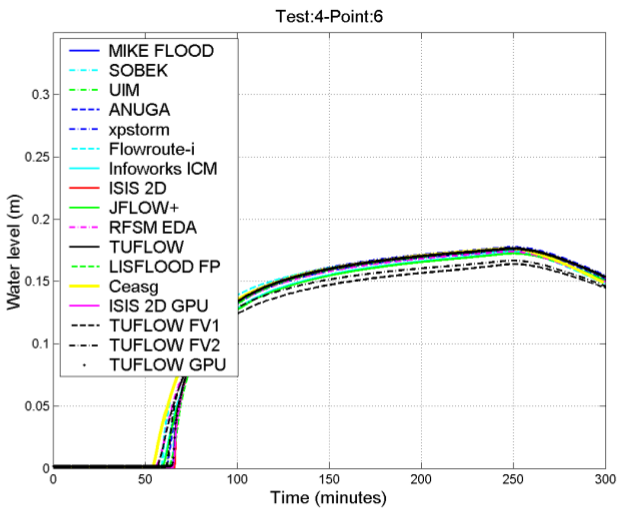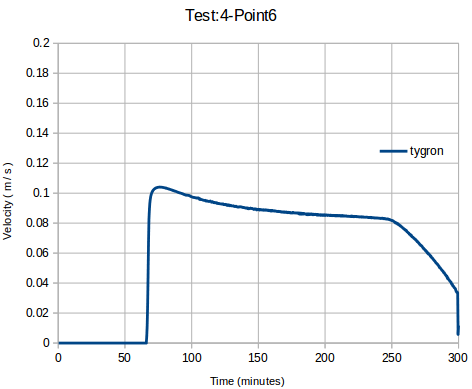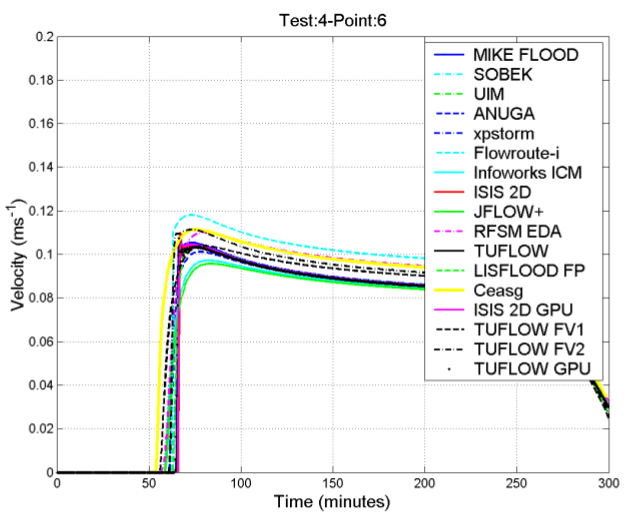UK EA benchmark 4 (Water Module)
This page reports on the performance of the Tygron Platform's Water Module by means of the UK EA Benchmark Test 4 – Speed of flood propagation over an extended floodplain.
The objective of this test is to assess the package’s ability to simulate the celerity of propagation of a flood wave and predict transient velocities and depths at the leading edge of the advancing flood front. It is relevant to fluvial and coastal inundation resulting from breached embankments.[1]
Description
This test is designed to simulate the rate of flood wave propagation over a 1,000 x 2,000 m floodplain following a defence failure (Fig. (a)). The floodplain surface is horizontal, at datum (= 0 m). One inflow boundary condition will be used, simulating the failure of an embankment by breaching or overtopping, with a peak flow of 20 m3/s and time base of ~6 h. The boundary condition is applied along a 20-m line in the middle of the western side of the floodplain.[1]
Boundary and initial condition
- Inflow boundary condition as shown in Fig. (b)
- All other boundaries are closed
- Initial condition: dry bed
Parameter values
- Manning’s n: 0.05 (uniform)
- Model grid resolution (m): 5 (or ~80,000 nodes in the area modelled)
- Simulated time (h): 5
Required output
| Point ID | X | Y |
|---|---|---|
| 1 | 50 | 1,000 |
| 2 | 100 | 1,000 |
| 3 | 200 | 1,000 |
| 4 | 300 | 1,000 |
| 5 | 300 | 1,000 |
| 6 | 300 | 1,300 |
- Software package used: version and numerical scheme
- Specification of hardware used to undertake the simulation: processor type and speed, RAM
- Minimum recommended hardware specification for a simulation of this type
- Time increment used, grid resolution (or number of nodes in area modelled) and total simulation time to specified time of end
- Raster grids (or TIN) at the model resolution consisting of:
- Depths and at t = 30 min, 1 h, 2 h, 3 h and 4 h
- Velocities (scalar) at t = 30 min, 1 h, 2 h, 3 h and 4 h
- Plots of velocity and water elevation v. time (suggested output frequency: 20 s) at the 6 locations represented in Fig. (a) and provided as part of dataset
Dataset content
- Upstream boundary condition table (inflow v. time). Filename: Test4BC.csv
- Location of output points. Filename: Test4Output.csv
The model geometry is as specified in Section 2. No DEM is provided, as the surface elevation is level at datum (= 0 m).[1]
Technical setup
- Flat surface
- Grid-cell size (m): 5
- Area size (m): 1,010 x 2,010 (required domain of 1,000 x 2,000 + 5-m border)
- The measurement points were positioned correctly (see Fig. 1)
In order to regulate the boundary discharge according the hydrograph (Fig. 2), 2 inlets were implemented. Both inlets occupied one grid cell, one of these located above and the other below the green center line (Fig. 3). The inlets were configured as follows:
- External area (m2): 1,000,000,000
- Water level (m): 1
- Threshold (m): none
- Inlet Q (m):
Results
Stats
- Software package used: Tygron Platform
- Numerical scheme: FV (Kurganov, Bollerman, Horvath)*
- Specification of hardware used to undertake the simulation:
- Processor: Intel Xeon @2.10GHz x 8
- RAM (GB): 62.8
- GPU: 2x NVidia 1,080
- Operating system: Linux 4.13
- Time increment used: adaptive
- Grid resolution (m): 5
- Simulation time (s): 29 for 900 timeframes
- Object flow (m3/s): 283,723.8
- Remaining water volume (m3/s): 283,606.9
Raster grids (or TIN) at the model resolution for water level and flow velocity
Contours of inundation extent
Cross sections
Plots of velocity and water elevation versus time
Notes
- The steps seen in the velocity profile can be related to the definition of the inlet inflow, which is also in steps.
References
- ↑ 1.0 1.1 1.2 Néelz, S., & Pender, G. (2013). Benchmarking the latest generation of 2D hydraulic modelling packages. Report: SC120002. Environment Agency, Horison House, Deanery Road, Bristol, BS1 9AH. ISBN: 978-1-84911-306-9. Retrieved from: https://www.gov.uk/government/publications/benchmarking-the-latest-generation-of-2d-hydraulicflood-modelling-packages
